-
4 Port USB 3.2 Gen 1 Type-C Hub w/ ESD Surge Protection
-
×
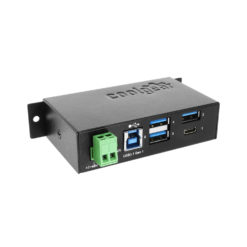
- StockStatus:
In stock
1 × $109.95
4 Port USB 3.2 Gen 1 Hub w/ Screw-Locking Ports & Status LEDs
Industrial Grade | +7~24V DC Input | Surface Mountable | 5 Gbps | LED Indicators
- Super Fast Speeds: This USB hub is 3.2 Gen 1 compliant, ensuring super-fast 5Gbps data transfer speeds. It supports super speed, high speed and full speed which enables it to be compatible with USB 2.0 / 1.1.
- Superior Build Quality: Housed in a rugged steel chassis with built in mountable flanges, the 4-port hub is perfect for installations in offices, labs, warehouses, heavy machinery, automation equipment, and other industrial applications.
- Check Your Ports’ Status: Quickly check the status of each port individually with built in LED indicators.
- Upstream: 1 USB port, Type B connector, Screw-lock type
- Downstream: 4 USB ports, Type A connectors, Screw-lock type
- Power Connector: 2-Pin Terminal Block, DC Barrel 2.1mm ID × 5.5mm OD
- Mounting Options: Wall & Surface
- Supply Current: 900mA USB Bus Power for Each Down-stream Port
$87.95
In stock
Description
Introduction:
The USBG-3X4M USB 3.2 Gen 1 4-Port Industrial hub with power supply provides 4 downstream facing ports with standard Type-A USB 3.2 Gen 1 connectors. It supports screw-lock features for both upstream (USB type B) and downstream (USB type A) connectors with the screw-lock USB cables. The screw-lock features are a preventative measure against accidental disconnection from the USB cables and hub.
With built-in single chip USB 3.2 Gen 1 controller, it is backward compatible either when any one of downstream port is connected to an USB 1.1 or USB 2.0 compliant device, or when the upstream port is connected to a USB 1.1 or USB 3.2 Gen 1 compliant host.
The USBG-3X4M USB 3.2 Gen 1 4-Port Industrial Hub design incorporates dual power conversion systems. This allows the hub to provide the USB 3.2 Gen 1 specification maximum of 900ma current on each port. There is no other USB 3.2 Gen 1 hub currently on the market that can provide this much power to all connected devices, simultaneously.
Features:
- Compliant with USB 3.2 Gen 1 Specification Revision 1.0
- Rigid and Wall-mountable metal case
- Provides 4 Downstream ports
- Supports Screw Lock Mechanism for Upstream and Downstream connectors to enhance reliability
- Supports SuperSpeed, High-Speed, and Full-Speed (USB 3.2 Gen 1, 2.0, and 1.1)
- Supports Self-powered and Bus-powered modes.
- Supports 900MA Buss Power for each Downstream Port (When using external power supply).
- Dimensions: 6.013in(L) 7.013 (w/flange) x 2.350(W) x .955in(H)
- Hub Weight: .65 lbs.
OS Support:
- Windows XP, 2000, 2003, CE, Vista, Windows 7, 8, and Windows 10
- Linux and Mac OS 10.X
Environmental Specification:
- Operating Temp: 0 to 55°C (32 to 131°F)
- Operating Humidity: 5 to 95% RH
Package Contents:
- USB 3.2 Gen 1 4 port industrial hub
- USB 3.2 Gen 1 A to B cable
- 12V 3A output power adapter and power cord
- 2 pin Phoenix power connector
- Paper installation guide
*Surface Mounting screws not included.
Accessories & Replacement Parts
Accessories & Replacement Parts
12V 6A External Power Supply 2 pin configuration A for Coolgear USB 2.0 and USB 3.0 commercial or industrial Metal Hubs. The power supply is…
Model# 12V7A2P-B
$29.95In stock
Replacement 2-Pin Power Connector for CoolGear USB 3.0 Hubs such as USBG-7U3ML.
Model# CG-2PPW
$2.95In stock
USB 3 Cable 5ft. USB 3.0 SuperSpeed cable with type A to B connectors for Desktop, Laptops, and other USB 3.0 devices requiring data transfers of…
Model# ABMSL-USB3-5FT
$10.95In stock
Specifications
Product Specifications
| Environmental |
| ||||||||||||||||
|---|---|---|---|---|---|---|---|---|---|---|---|---|---|---|---|---|---|
| Performance |
| ||||||||||||||||
| Hardware |
| ||||||||||||||||
| Product Information |
| ||||||||||||||||
| Power |
| ||||||||||||||||
| Software |
| ||||||||||||||||
| What's in the Box |
| ||||||||||||||||
| USB |
| ||||||||||||||||
| Mechanical |
| ||||||||||||||||
| Compliance |
| ||||||||||||||||
| Other Data |
|
Reviews (11)
11 reviews for 4 Port USB 3.2 Gen 1 Hub w/ Screw-Locking Ports & Status LEDs
Add a review
Support
Product Documentation & Drivers
Product Documentation
Need drawings, CAD files, or other compliance documentation? Click HERE
Hubs F.A.Q.
Product F.A.Q.
View frequently asked product questions below. Still need help? Reach out!
-
Can the hub be used without a power supply?
View AnswerIn some cases, yes. USB peripherals that only require low power (i.e. keyboards & mice) can be used without a power adapter. Power in this case is drawn from the host’s USB port.
When high-power USB peripherals are used, a power supply for the USB hub may be required. In other cases, the USB peripheral may require their own power adapters, in this case, a power supply for the hub may not be required. Without ample power though, the USB hub or connected peripherals may not operate correctly. It is recommended to use an included power supply when possible.
-
After waking up from sleep mode, my computer/host no longer recognizes my USB device.
View AnswerIf the USB device does not function properly after your computer or host has been in sleep mode, it is likely that Windows turned off the USB Root hub in order to save power.
To prevent this, follow the steps below (depending on your operating system).
Windows 10 / 8
- On your keyboard, press the Windows key + X and select Control Panel.
- Click Hardware and Sound, then click Power Options.
- Click Change plan settings for the plan you want to change.
- Click Change advanced power settings.
- Click the plus sign (+) next to “USB settings” and “USB selective suspend setting” to expand the options and change the setting to Disabled.
- Click OK to apply the setting.
Note: You may need to disconnect and re-connect your USB device after applying these settings.
Windows 7 / Vista
- Click the Start button and select Control Panel.
- Click Hardware and Sound, then click Power Options.
- Click Change plan settings for the plan you want to change.
- Click Change advanced power settings.
- Click the plus sign (+) next to “USB settings” and “USB selective suspend setting” to expand the options and change the setting to Disabled.
- Click OK to apply the setting.
Note: You may need to disconnect and re-connect your USB device after applying these settings.
Windows XP
- On your desktop, right-click the My Computer icon and select Properties.
- Click the Device Manager tab.
- Expand Universal Serial Bus controllers by clicking the arrow to the left of it.
- Right-click the first USB Root Hub device and select Properties.
- Click the Power Management tab.
- Clear the box next to Allow the computer to turn off this device to save power.
- Click OK to apply the setting.
- Repeat steps 4-7 for any remaining devices in the Universal Serial Bus Controllers section with “Root Hub” in the name.
Note: You may need to disconnect and re-connect your USB device after applying these settings.
-
The hub is properly hooked up, but is not functioning correctly. What can I do?
View AnswerTesting all setup components is the best place to begin troubleshooting. To determine the source of the issue, individually test your:
- USB Cable by using it in another setup, or trying another cable.
- Host USB Port by connecting another device or thumb drive.
- Connected Peripherals by connecting directly to the host.
Moving on to troubleshooting the hub itself. Attach a USB peripheral. The USB hub itself will not appear in hardware listings on your host’s system. USB devices connected however, will appear when connected. If the connected device is still not being found, try:
- Installing the required drivers for the USB peripheral.
- Install the most recent drivers for the USB controller and/or motherboard chipset.
USB hubs do not require drivers or software.
Troubleshooting the desired USB peripheral may be in order. If the peripheral is still not being recognized, attempt:
- Attaching external power to the peripheral, if required.
- Confirming if the peripheral functions on a standard USB port.
- Testing if basic USB peripherals work, such as keyboards or mice.
-
How can external power be connected to the industrial USB hub?
External power is supplied by connecting to the terminal block located on the hub. For when an external power adapter is required check out the Accessories & Replacement Parts section on this product page. To view all of our hub accessories and power supplies, visit the category here.
How to properly choose a power supply.To determine the power requirements, the equation to use is P = 5 * I * N, where:
P is the power wattage.
5 is the USB port voltage.
I is the current of the USB port in Amps (USB 2.0 is 0.5A, USB 3.0 is 0.9A.
N is the number of USB ports.
As an example using the equation, a 4 port hub would reflect a minimum wattage of 18 watts.
Knowing the minimum requirement, a proper power adapter can be chosen. In this case the voltage of a power supply should be within 7 to 24 or 7 to 40 Volts DC, depending on the specifications of the USB hub. Also, the power supply must convert AC to DC (no AC output).
Power supplies often come with a voltage (V) rating and an amperage (A) rating. To determine the current in amps, use I = P / V, where the following is true:
I is the current of the power supply.
P is the calculated power of the hub.
V is the chosen voltage of the power supply
Continuing the example, the 4 port hub requires 18 W and the power supply you choose is 12V, the current of the power supply would be I = 18/12, I = 1.5A.
Our full collection of power adapters can be found here.







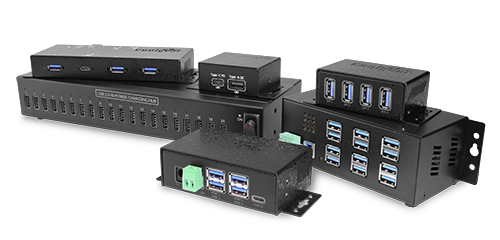
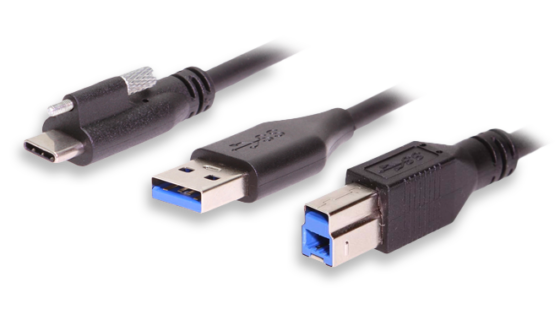
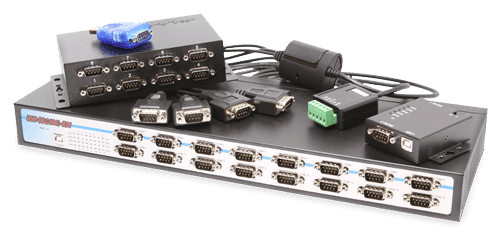
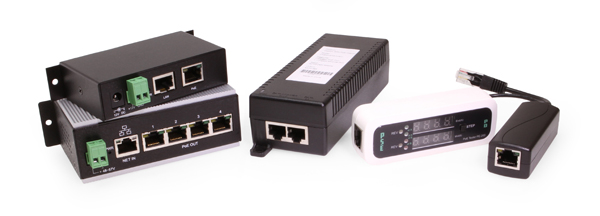
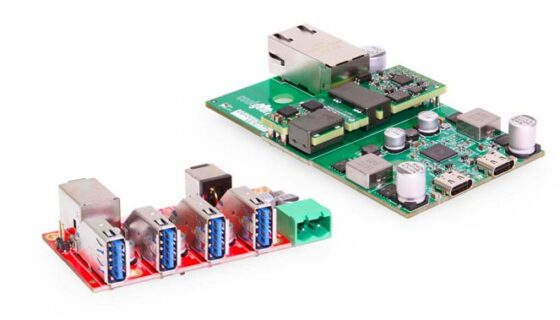

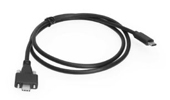
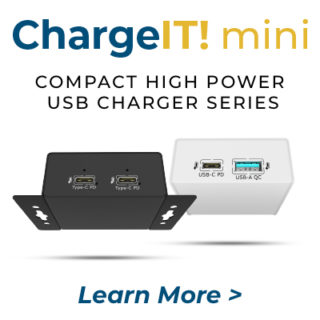
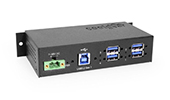
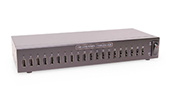
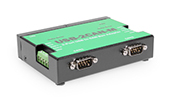
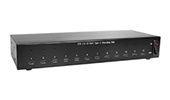
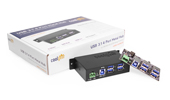
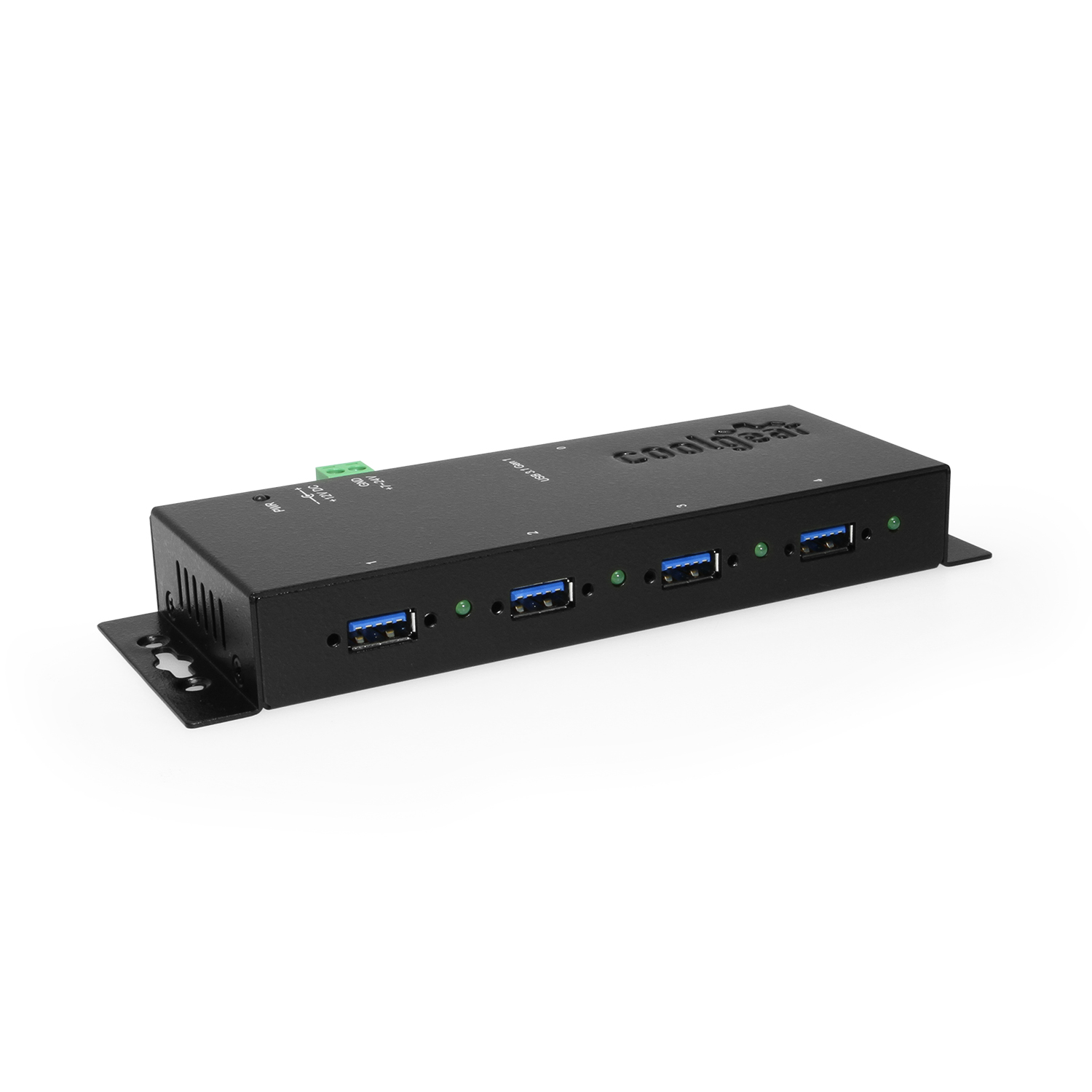
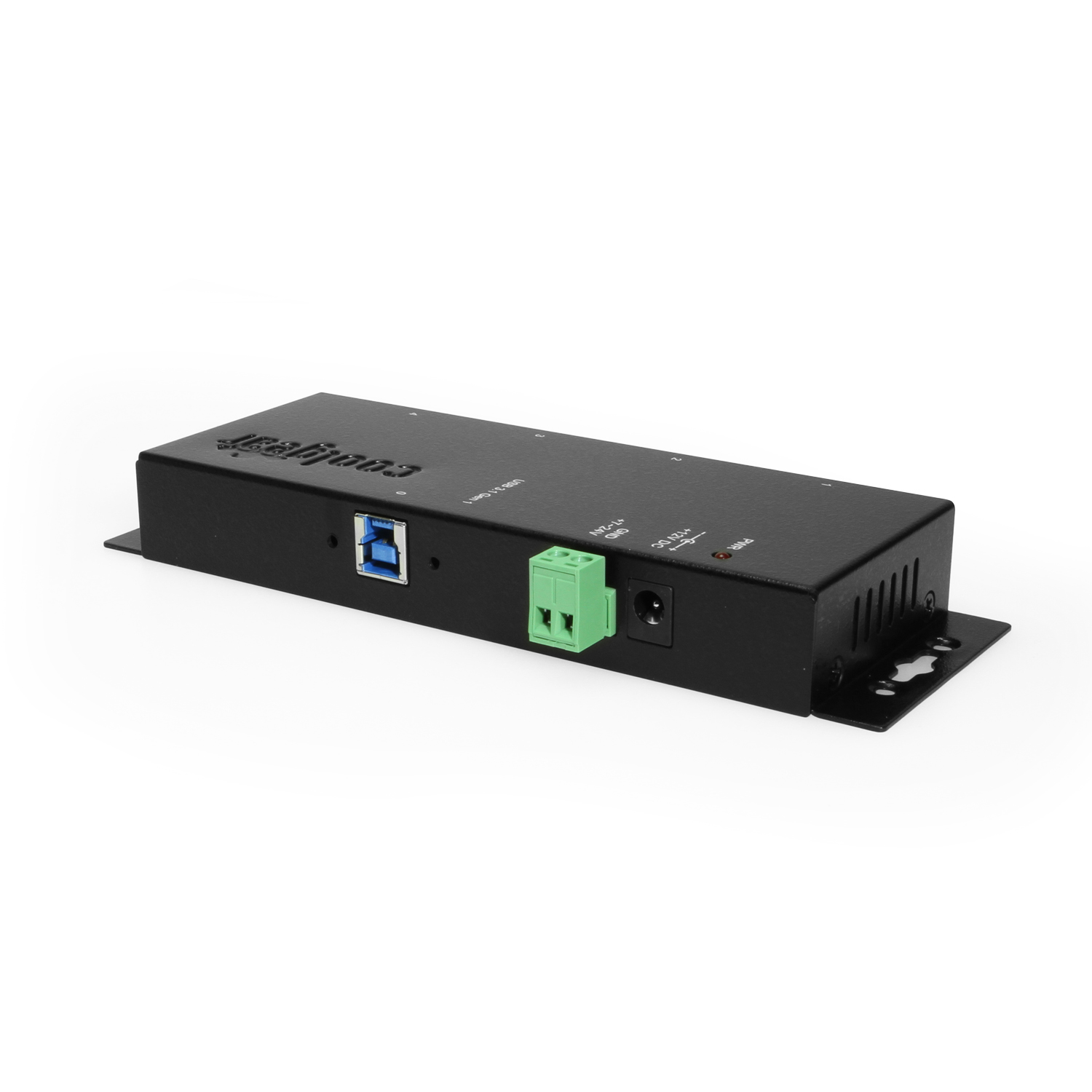
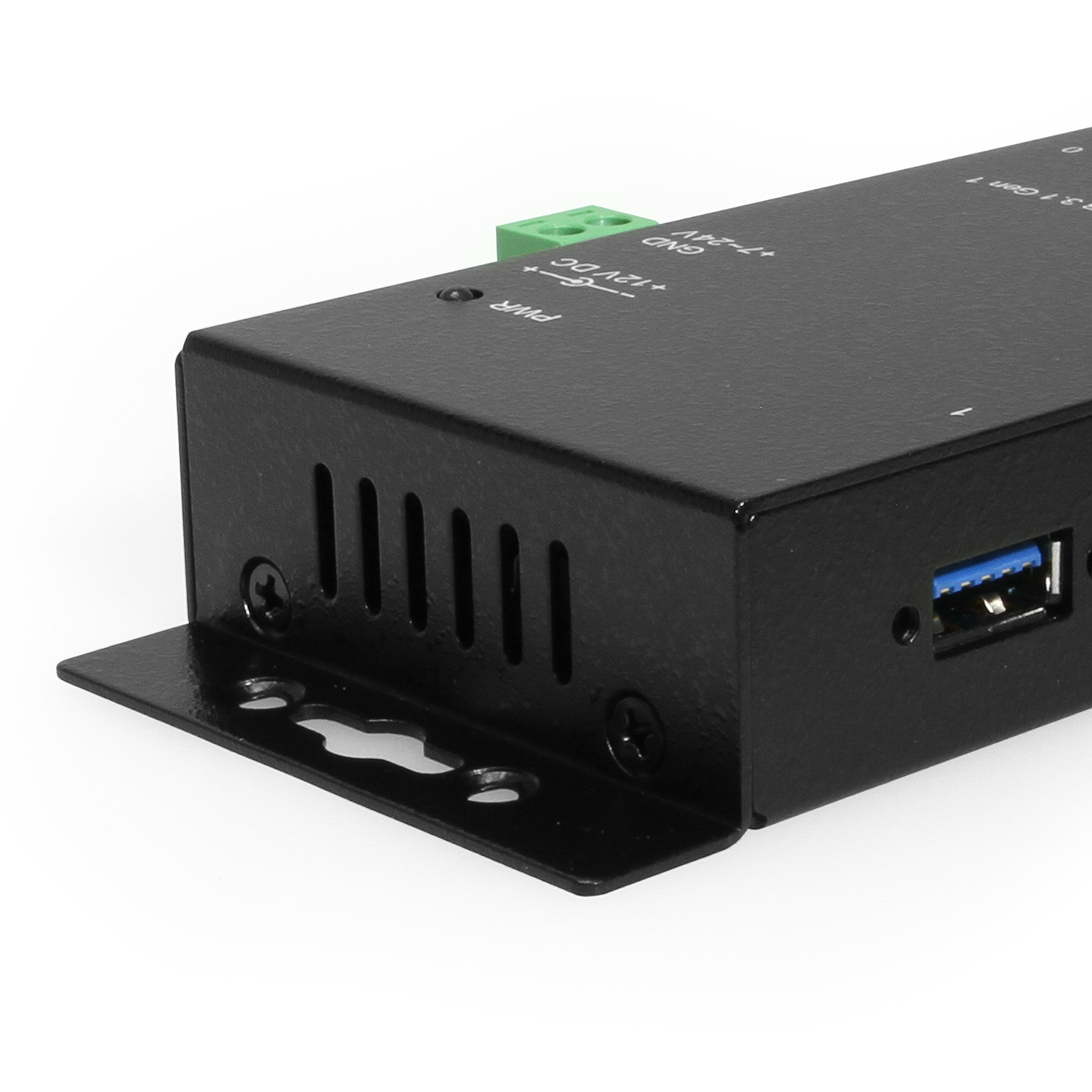
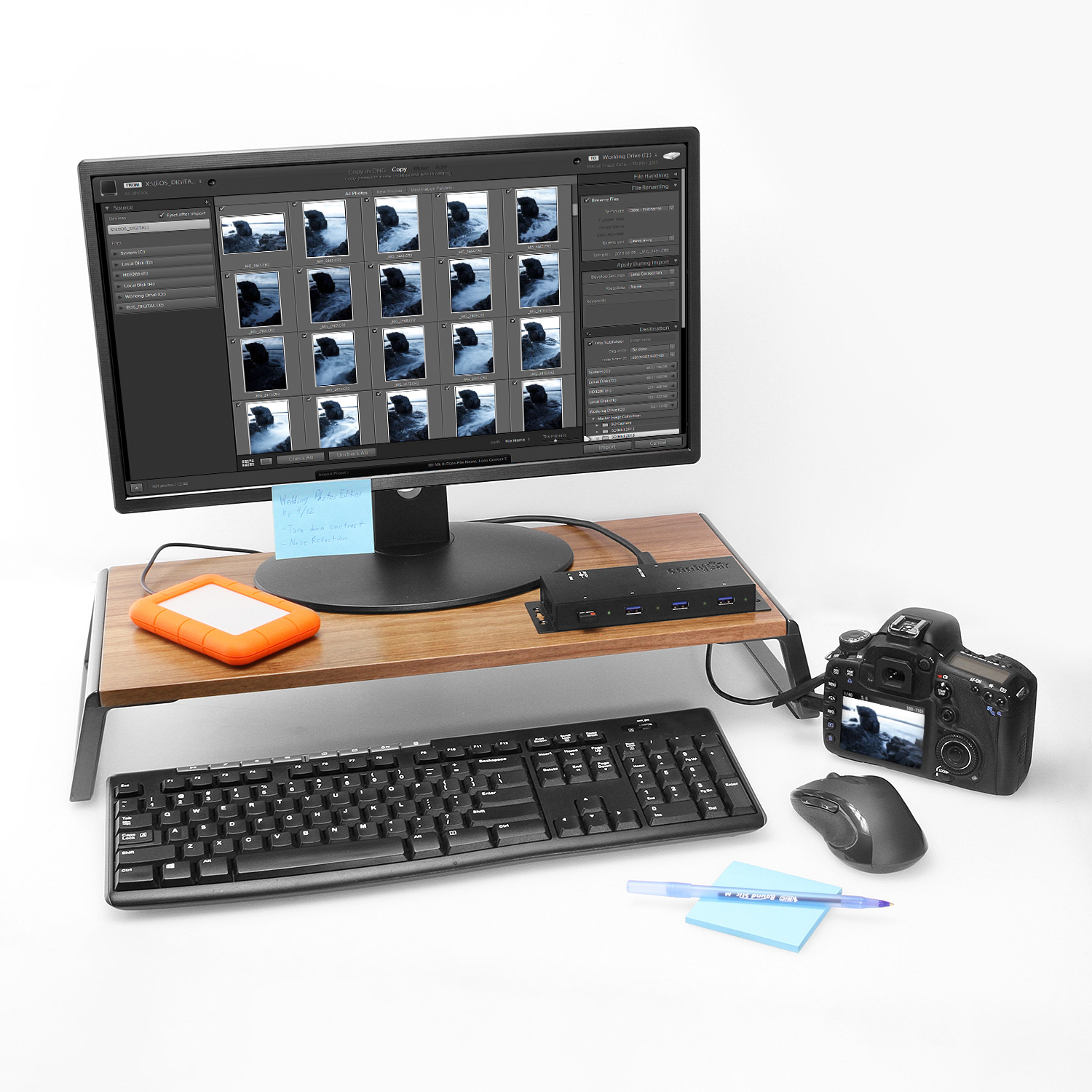
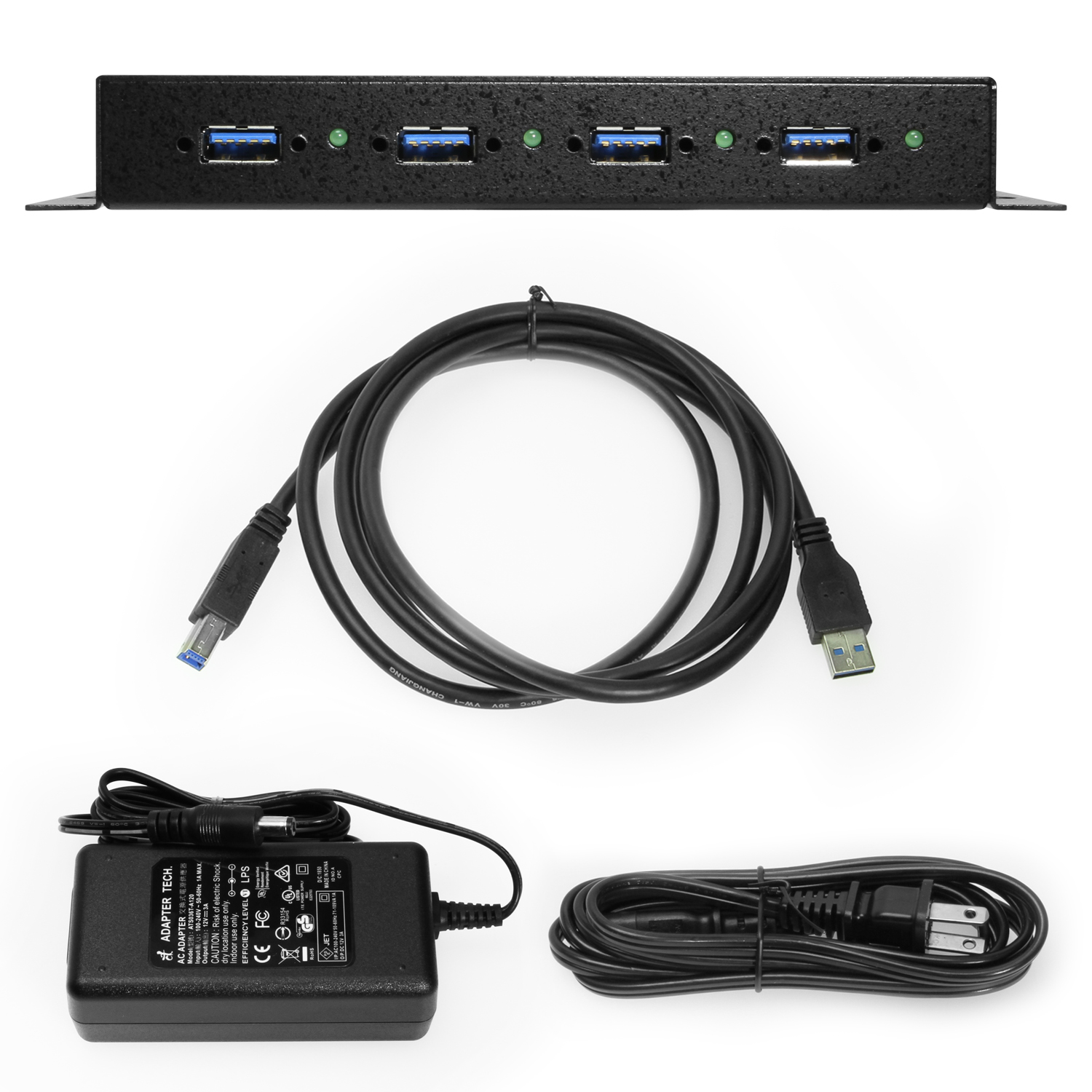
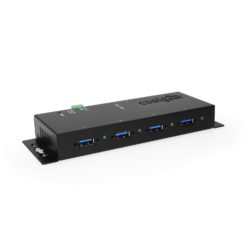
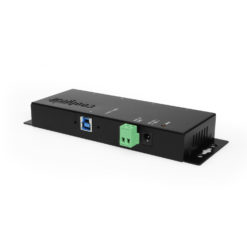
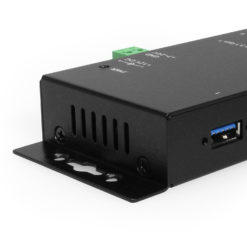
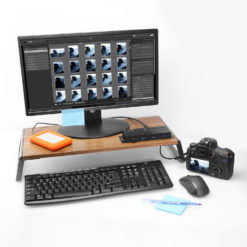
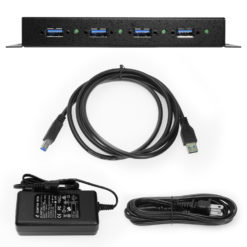
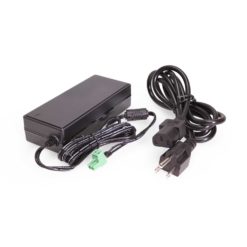
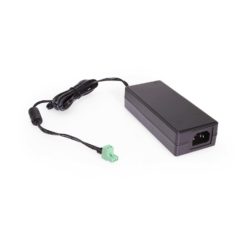
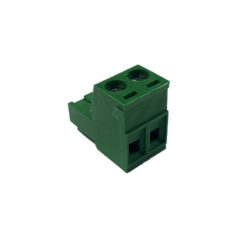
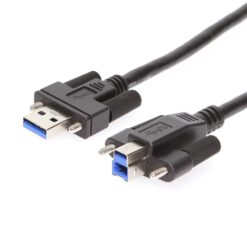
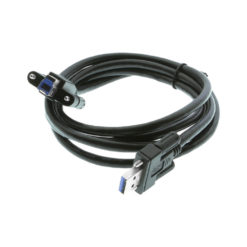
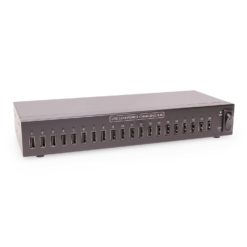
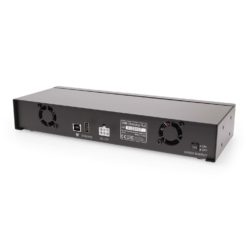
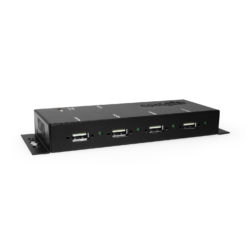
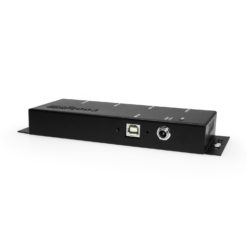
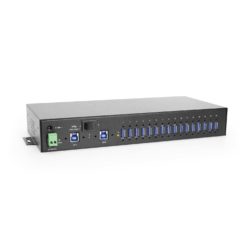
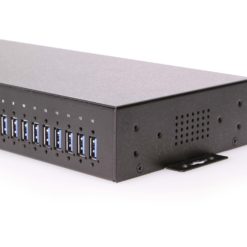
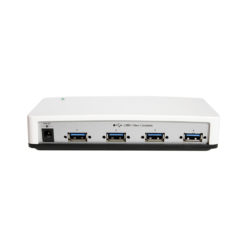
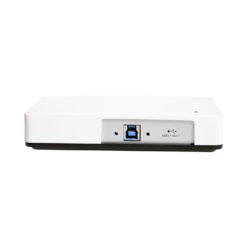
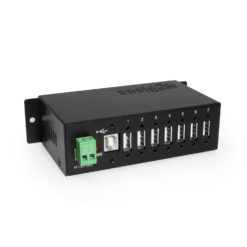
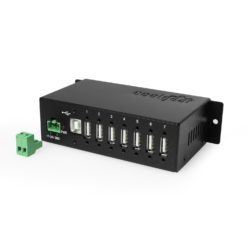
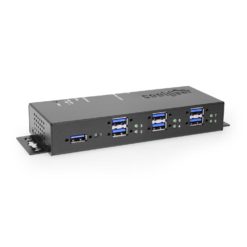
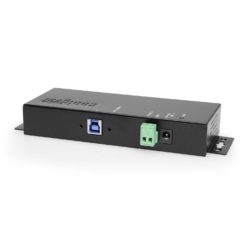
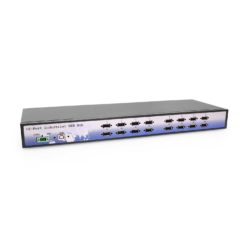
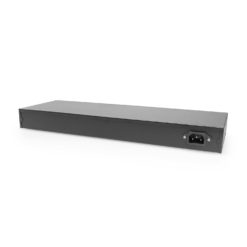
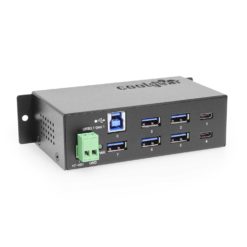
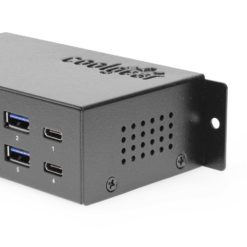
Phrish –
Outstanding USB 3.0 Hub
I’ll start by saying that this is an expensive hub. However, I have purchased 3 of them and am contemplating a 4th.
ADVANTAGES (for me)
– It’s a heavy, all metal hub, with superb build quality. The build quality seriously cannot be matched. IMHO nothing comes close.
– Has bus and self powered modes. I don’t worry about power in this thing at all with the external power, but it can also function passively. It’s well built and well ventilated.
– If you look at the down ports, they have holes on each side of the port to screw in the USB cables. I don’t have any devices with these attachments, but this is serious industrial connection strength if you have the need.
– And my personal favorite… it has mounting screw holes on the chassis.
DISADVANTAGES (which may or may not matter, they don’t really matter to me)
– It’s not really pretty. It’s industrial quality, but it’s also industrial looking. It’s great for mounting under a desk surface, leg, wall, or other not super conspicuous place.
– It only has 4 down ports. Not a really big deal for me, as I have multiple hubs, but it can get pricey if you have several devices.
I got these hubs with a new computer build that has USB 3.0 in a new home. I knew my setup would be very fixed for a long time, so I wanted a serious solution for the new USB 3.0 protocol (and backwards compatible connecting 2.0 devices of course). I mounted these under my desk and on the side of a hutch with some small screws. The hubs are quite immobile. I can plug/unplug devices at will and it won’t slide around at all. I never worry about pulling power, or yanking cables out for my more mobile accessories. The ones under my desk surface are perfect for printers, mice, microphones, keyboards, etc. the stuff that I never really unplug. I have ports to spare. The one on the side of the hutch is for the devices that I plug/unplug a lot like thumb drives, phone, tablet, cameras, etc. It looks fine, and is in area where I can arrange cable routing very conveniently.
I highly recommend this hub if you need serious durability, performance, or you need to screw the hubs down to keep them from sliding all over the place. They’re not shiny, but not meant to be. They are a power-user’s hub.
Professortan –
Great device, works reliably, built like a rock.
D. Hanson –
This is a beautifully constructed hub. Metal case, screw tabs to allow for under desk mounting, overall a nice solid piece of hardware. Unfortunately I can’t say anything much more for it. There is some sort of hardware issue with this hub that causes my 2015 Mac Pro to constantly throw out alerts about too much power draw and then the computer promptly disconnects whatever devices I have plugged into it. In looking at the manual it seems that the manufacturer is aware of this! I’m not sure why they would ship a product with an issue like this. For being a $55 hub this is a little disappointing. I replaced it with a generic Amazon Basics USB 3.0 hub and I’ve had no issues since.
W. Johnson “Bill” –
I bought two of these. One for the front of my PC desk and one for the rear. I connected Power supplies which provide full power to each port. You will not get this if you don’t connect it. I get full power, full speed and no issues on my WIn8.1 custom built PC with 3.0 USB ports. I don’t understand the other comments unless users are not hooking to USB PC ports and not using the power supply. The supply needs to deliver 1 amp per port for it to supply voltage to non-powered USB devices.
Chong Ching Liang –
Works fine initially but occasionally will cause issues with my Macbook with a message that “Device is drawing too much power” even though the wall wart is plugged in.Very well constructed otherwise with a metal enclosure